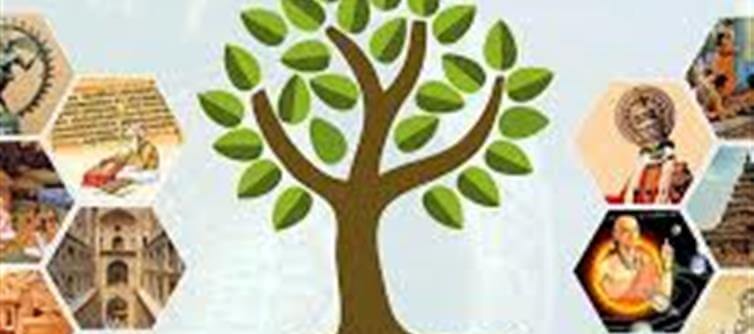
In an exciting move, the indian government has announced plans to introduce Ayurveda as a subject in schools and colleges across the country. The National Council of Educational Research and Training (NCERT) and the University Grants Commission (UGC) are collaborating to develop a new curriculum that will integrate ayurveda into mainstream education. This groundbreaking initiative is expected to bring the ancient science of ayurveda closer to the younger generation, offering them valuable insights into holistic health and wellness.
1. The Beginning of a New Era for ayurveda in Education
Ayurveda, which has been practiced in india for thousands of years, focuses on maintaining balance in the body, mind, and spirit for overall health. Now, the indian government aims to formalize this knowledge in the education system. The new curriculum is expected to be developed with input from experts and scholars in the field of ayurveda, ensuring that the teachings are authentic, comprehensive, and suitable for students of various age groups.
2. Why Ayurveda?
Ayurveda is one of the world’s oldest systems of medicine, with a rich tradition of natural healing and wellness practices. As the world grows increasingly interested in natural and alternative medicine, there has been a growing push to integrate ayurveda into the education system. Introducing ayurveda to students will not only provide them with a broader perspective on health but also promote the importance of sustainable living and holistic well-being.
3. What Will the Curriculum Include?
The curriculum will likely cover a range of topics within ayurveda, including:
· Basic Principles of Ayurveda: students will learn about the fundamental concepts such as the three doshas (Vata, Pitta, and Kapha), five elements, and the role of balance in health.
· Ayurvedic Diet and Lifestyle: Lessons on nutrition, dietary guidelines, and lifestyle practices that promote overall wellness will be included, emphasizing the importance of a balanced diet, exercise, and mental health.
· Herbal Medicine: students will be introduced to common Ayurvedic herbs and plants and their therapeutic uses in treating various health conditions.
· Ayurvedic Treatments: While in-depth clinical training may not be a part of the school curriculum, students may be taught the basics of Ayurvedic treatments such as Panchakarma, massage, and detoxification therapies.
· Connection with Modern Medicine: The curriculum will also aim to provide a bridge between traditional ayurveda and modern medicine, showing how both can complement each other for better health outcomes.
4. A Step Toward Promoting Holistic Health
One of the key benefits of incorporating ayurveda into the education system is the promotion of a more holistic approach to health. While modern medicine focuses largely on treating symptoms and diseases, ayurveda emphasizes preventive care, maintaining balance in the body, and ensuring overall well-being.
With mental health and lifestyle diseases becoming increasingly prevalent, Ayurveda’s teachings on stress management, meditation, and a balanced lifestyle could be invaluable for today’s students.
5. Curriculum Implementation: When Will It Begin?
The development of the curriculum is already underway, with NCERT and UGC working to create course modules that are age-appropriate and relevant for students at various educational levels. The new syllabus is expected to be implemented starting from the next academic session, though specific timelines may vary across states and institutions.
6. How Will ayurveda Be Taught?
The new curriculum will be designed to fit into existing subjects, especially in the Health and Wellness and Science streams. ayurveda will likely be offered as an elective subject in high schools and may be integrated into medical, dental, and pharmaceutical colleges as part of the curriculum.
Workshops, seminars, and practical sessions will also be an integral part of the learning process, where students can learn about Ayurvedic practices firsthand.
7. Impact on Future Generations
By incorporating ayurveda into the educational system, the government is not only preserving India’s ancient medical heritage but also giving students an opportunity to learn and apply traditional knowledge in today’s fast-paced world. This move is expected to:
· Encourage self-care and personal wellness from an early age.
· Raise awareness about the benefits of natural healing methods.
· Equip students with knowledge that can be useful in their personal and professional lives, especially in health-related careers.
8. A Global Perspective on Ayurveda
In recent years, ayurveda has gained recognition worldwide for its focus on natural healing and preventive care. With this new educational initiative, india could help popularize ayurveda globally, offering students from other countries a chance to learn about this ancient tradition. This move could also increase India’s role as a global leader in the wellness and natural healthcare sectors.
9. Conclusion: A Holistic Approach to Education
The introduction of ayurveda in schools and colleges marks a significant step towards a more holistic education system that combines traditional knowledge with modern science. By learning about ayurveda, students will not only understand the importance of physical health but also the vital connection between the body, mind, and spirit. As the world increasingly looks towards natural and sustainable practices, this initiative could pave the way for a healthier and more balanced future generation.
The NCERT and UGC's efforts to develop this curriculum demonstrate the government’s commitment to promoting Ayurvedic principles in the mainstream, making this an exciting development for students, educators, and health enthusiasts alike.
Disclaimer:
The views and opinions expressed in this article are those of the author and do not necessarily reflect the official policy or position of any agency, organization, employer, or company. All information provided is for general informational purposes only. While every effort has been made to ensure accuracy, we make no representations or warranties of any kind, express or implied, about the completeness, reliability, or suitability of the information contained herein. Readers are advised to verify facts and seek professional advice where necessary. Any reliance placed on such information is strictly at the reader’s own risk..jpg)




 click and follow Indiaherald WhatsApp channel
click and follow Indiaherald WhatsApp channel